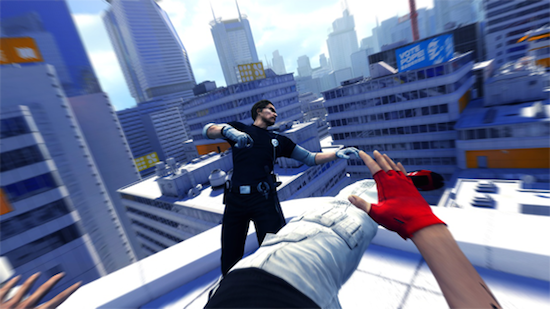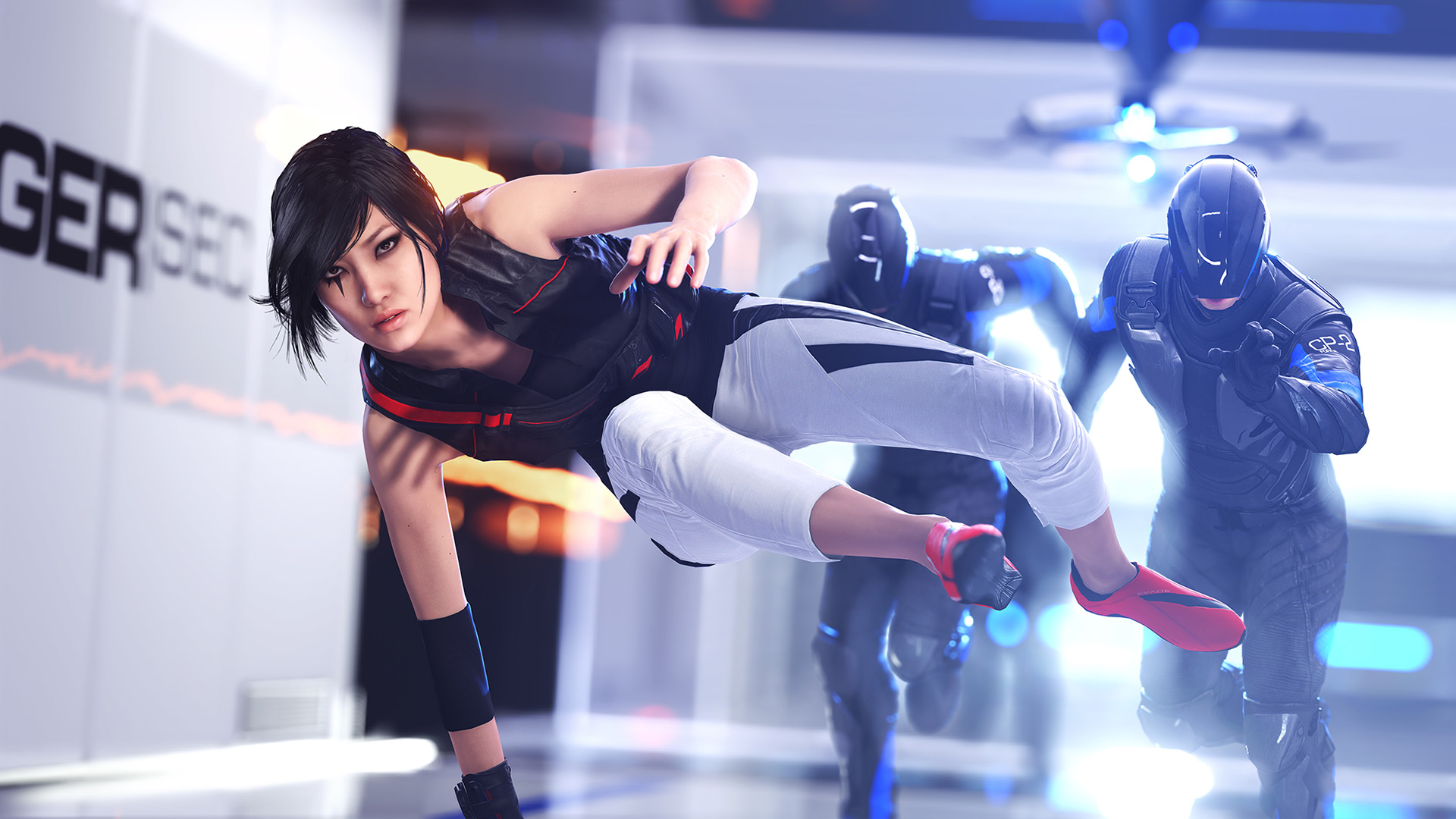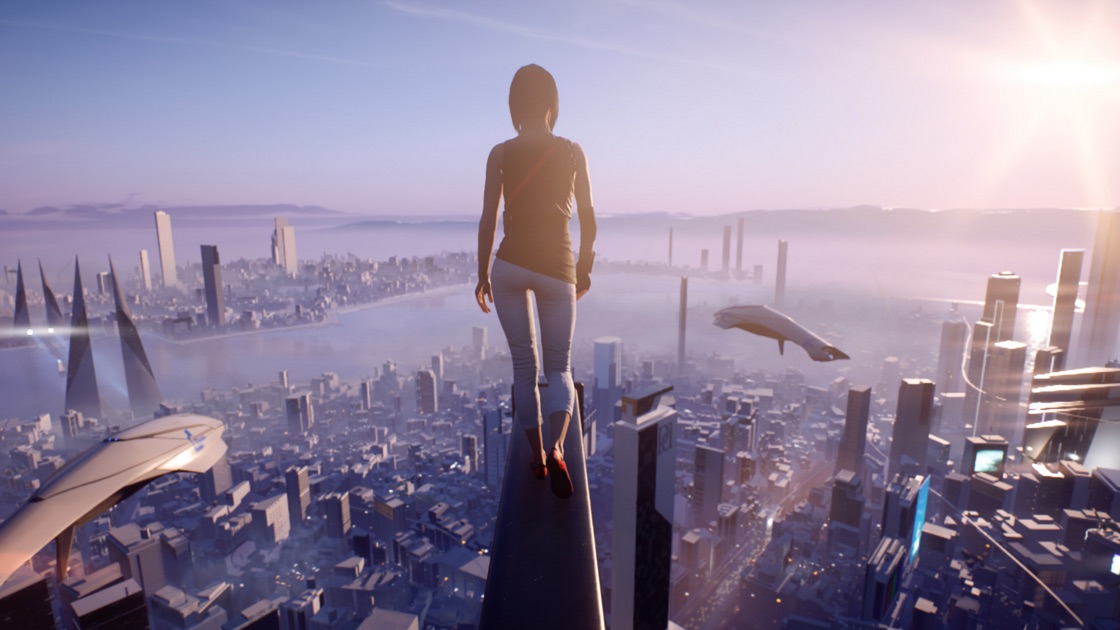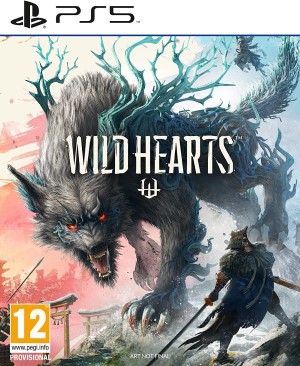
The massive and rapid growth of the games industry and gaming as a medium has been a net positive, obviously, but it’s come with a few caveats. One of those is an aversion to risk- big publishers in particular aren’t as keen on making unique and experimental games, fearing that the money they generate might not be enough to warrant the massive investments that pretty much all games require in development these days. The consequent homogenization of games has resulted in the truly unique experiences becoming something of an endangered species- which is why the memory of similar games from a not-too-distant era has become all the more treasured as time has gone on.
One such game was Mirror’s Edge, which, funnily enough, came from DICE and EA, who’ve very much become emblematic of the risk-averse approach to game development that defines the AAA space in this day and age. Very much a prime example of a cult classic, the original Mirror’s Edge has a dedicated fan following that swears by the game to this day, and even though its sequel fell short of expectations in more ways than one, there’s no shortage of people out there who’d love nothing more than to see the series make a comeback. Sadly, that looks quite unlikely, because Mirror’s Edge isn’t in a very good place. What was once one of EA’s most promising and interesting franchises has quietly receded into the background and all but died off- but how exactly did we get to this point? What the hell happened to Mirror’s Edge?
The first game in the series, releasing in 2008, may not have burst onto the scene as a major new IP with instant and rapturous commercial, and its critical reception, too, didn’t exactly hint at it being The Next Big Thing™. Over the years, it managed to become a multi-million seller, but those have never been numbers that would impress a publisher like EA, while its high 70s aggregate score isn’t anything to write home about either. But numbers don’t always tell the whole story. Word of mouth for Mirror’s Edge was strong pretty much since the day it came out, and slowly but surely, it cultivated a strong fanbase that completely fell in love with what the game had on offer.
Because what the game had on offer, honestly, was so completely unlike anything else we’d ever seen before. Platformers and first person action games could both be found in abundance back in 2008, but a first person platformer like Mirror’s Edge was wholly unique. With a complete and absolute focus on parkour and momentum, the game promised something different, and best of all, it ensured that those aspects were just as good in execution as they were on paper. DICE absolutely nailed the most important parts of Mirror’s Edge, from the tightness and responsiveness of controls and the fluidity and variety of animations to the meticulously crafted layout of levels and the feeling of constant momentum and slick movement. Playing Mirror’s Edge was just as much as as looking at it, and in both ways, the game delivered something that couldn’t be found anywhere else.
Other aspects of the game stood out amongst the crowd as well- like the visuals, for instance. Focusing on dominant hues of sharp and shining white environments peppered with bold splashes of primary colours, Mirror’s Edge was a strikingly beautiful game to look at. Simply looking at and existing in its environments was a joyous experience, and the fact that that distinct art style worked perfectly in conjunction with its precision- and momentum-based parkour mechanics made them stand out that much more. Mirror’s Edge wasn’t a perfect game, with its lackluster story and relentlessly clunky combat being prime examples of issues that could often drag the experience down, but this was a game that was characterized by bold risks and innovative ideas- and in those areas, which were the ones that counted the most, it stuck the landing in terms of bringing those ideas to life.
Again, though, Mirror’s Edge was more of a sleeper hit than a runaway success when it first came out, so EA wasn’t exactly chomping at the bit to make a sequel. Fans of the game kept on demanding one, and for a long time, those demands went unheard. We got a mobile game in 2010, which was a surprisingly well-made and enjoyable (if short) 2.5D platformer, but as the years passed, people started losing hope that we would ever get a proper full-fledged console sequel.
Of course, dwindling hopes were eventually rewarded- the game that would go on to be released as Mirror’s Edge: Catalyst in 2016 was first announced in 2013, half a decade after the first game came out. Fans were elated, as they had every right to be, and the stuff that DICE and EA said about the reboot/sequel in the couple of years that followed the announcement was more than a little encouraging. The biggest draw, of course, was the open world, because of course, the very idea of being let loose in a vast, open sandbox designed around the stellar parkour mechanics of Mirror’s Edge was a salivating one.
Sadly, when the game actually came out, it failed to make good on its promise. The open world, which should have been one of its biggest strengths, turned out to be its biggest weakness. It was too empty, felt too barren, looked too samey, and the side activities it offered just weren’t any fun. In retrospect, it became clear that the focused, linear design of Mirror’s Edge had been perfect for this formula- zipping your way through tightly designed levels in the original was more fun than the freeform traversal of Catalyst, because the former, after all, was a much more curated experience that very pointedly focused on what the game was good at. The art style and world design of the series that stood out in the short and linear experience that was the original game became dull and repetitive when brought over into a significantly longer, open world experience, because the latter, by its very nature, demands for variety.
Like many other games over the last decade, Mirror’s Edge: Catalyst fell into the open world trap, and buckled under the weight of its unnecessary ambitions. But the game faltered in other areas as well. Attempting to address criticisms levied at its predecessor’s combat, Catalyst dropped guns entirely, instead focusing exclusively on melee attacks and dodges- and while that sounded like the perfect move on paper, in practice, it was still a clunky and frustrating mess. Meanwhile, the story, too, was far from decent- it was a windy, convoluted plot littered with unlikeable characters and bizarre plot twists and revelations. Rather than falling in line with the general identity of the series and fousing on simplicity, with its story, Mirror’s Edge: Catalyst tried, once again, to be too ambitious- which proved to be its undoing.
Unsurprisingly, critics and players weren’t kind to the game. People recognized the fact that there was still fun to be had there – and there definitely was – but that was down to the core strengths of Mirror’s Edge’s parkour and movement mechanics. Everything big and new that Catalyst tried was a failure to varying degrees, and the end result was a game that fell severely short of expectations, and didn’t justify the eighty year-long wait for a new full-fledged Mirror’s Edge game at all.
And now, more than five years later, the future looks bleak for Mirror’s Edge as a series. There hasn’t been a single peep out of EA about the possibility of reviving the franchise, and with the publisher focused on sureshot moneymakers like Battlefield, Star Wars, and FIFA now more than ever, the likelihood of them investing in a AAA production as experimental and unusual as Mirror’s Edge seems quite low. Sure, the fact that they’re bringing back Dead Space might give fans some hope that maybe, just maybe Mirror’s Edge has some sort of a future- but again, given how big Battlefield has become for EA, you have to wonder whether DICE will even have the time or inclination to do anything other than new Battlefield games in the future.
If Mirror’s Edge does ever come back – and that’s a big if – I, for one, hope that it goes back to the basics and delivers a much more focused experience in vein of the original, because that, after all, is where this series has always been at its best. Even if it doesn’t though, what matters more than anything else one way or another is that with its next crack at the series – if there is a next crack at the series – EA delivers a sureshot success that doesn’t set the property back as significantly as Mirror’s Edge: Catalyst did. Something like that would be a complete death knell for this series, which is the absolute last thing it needs given the state it’s in.
Note: The views expressed in this article are those of the author and do not necessarily represent the views of, and should not be attributed to, GamingBolt as an organization.




















Share Your Thoughts Below (Always follow our comments policy!)